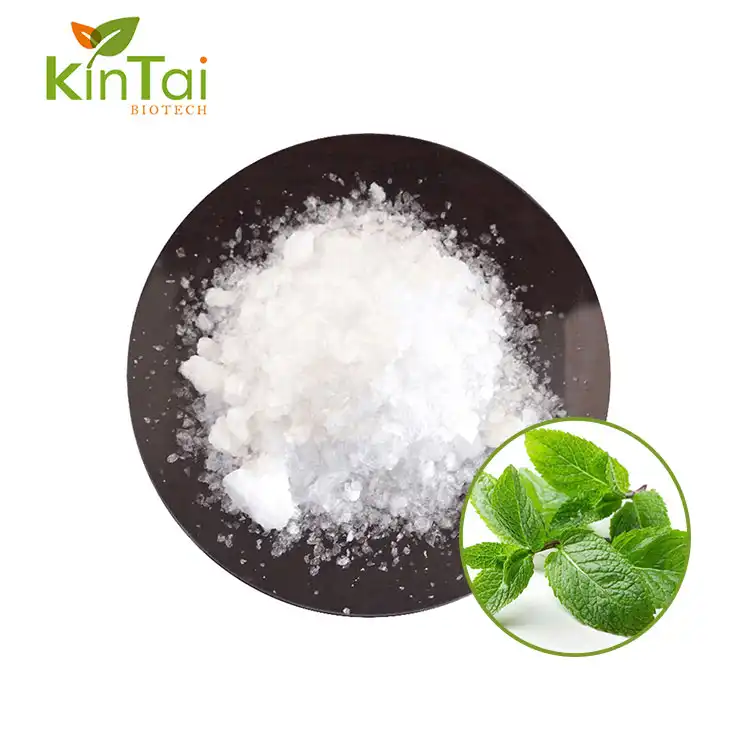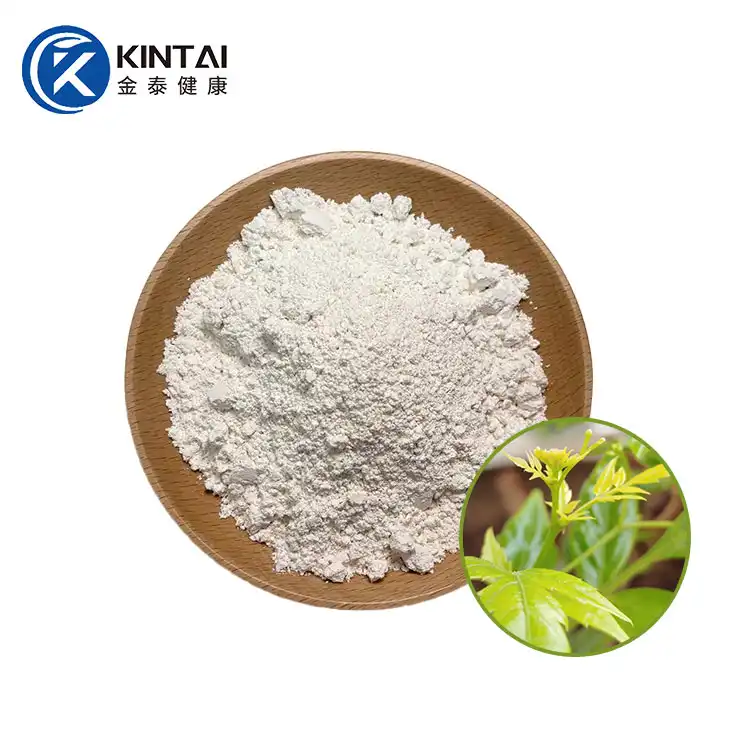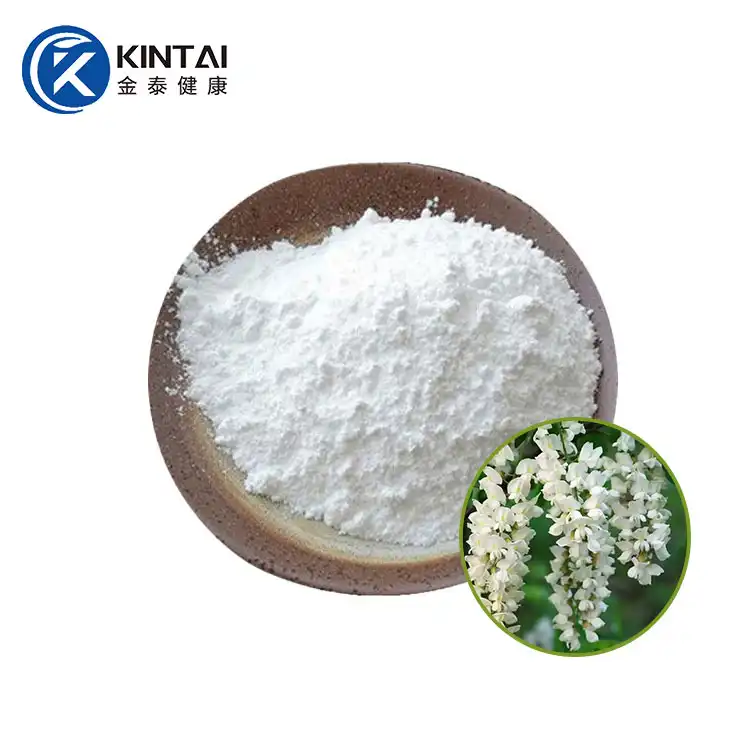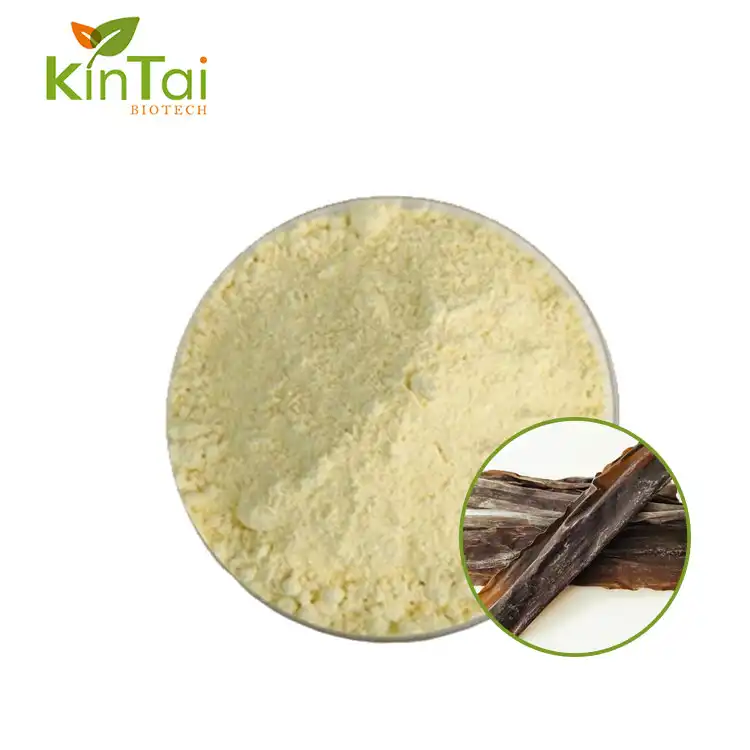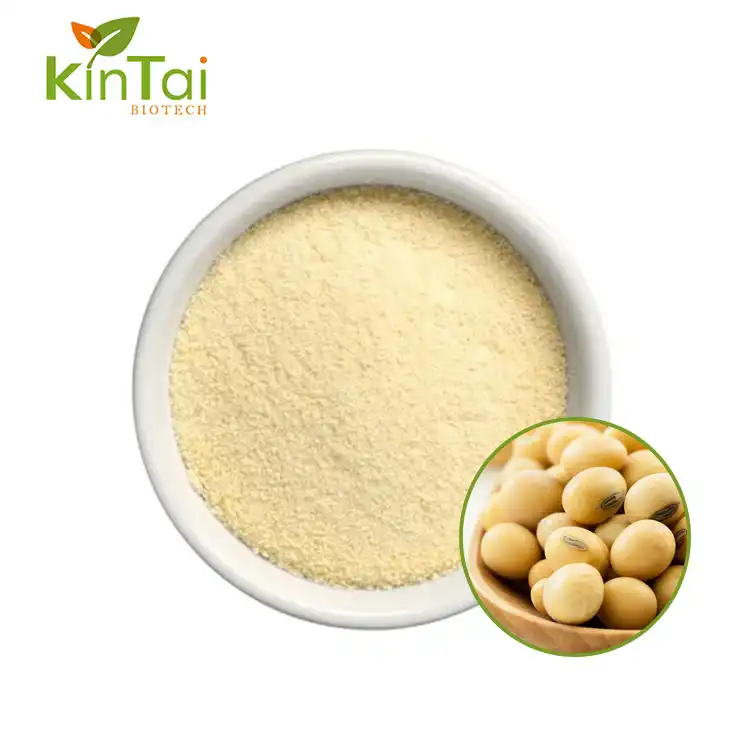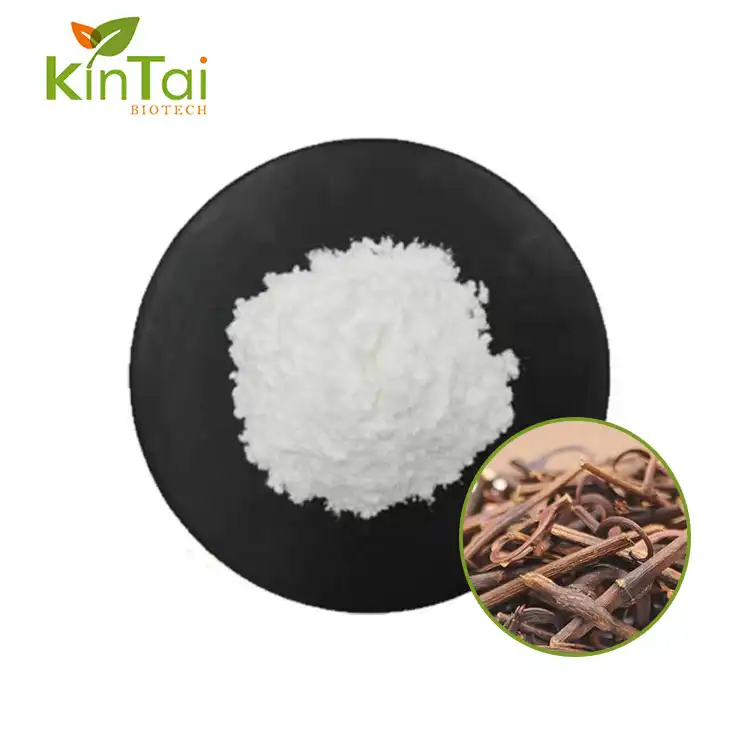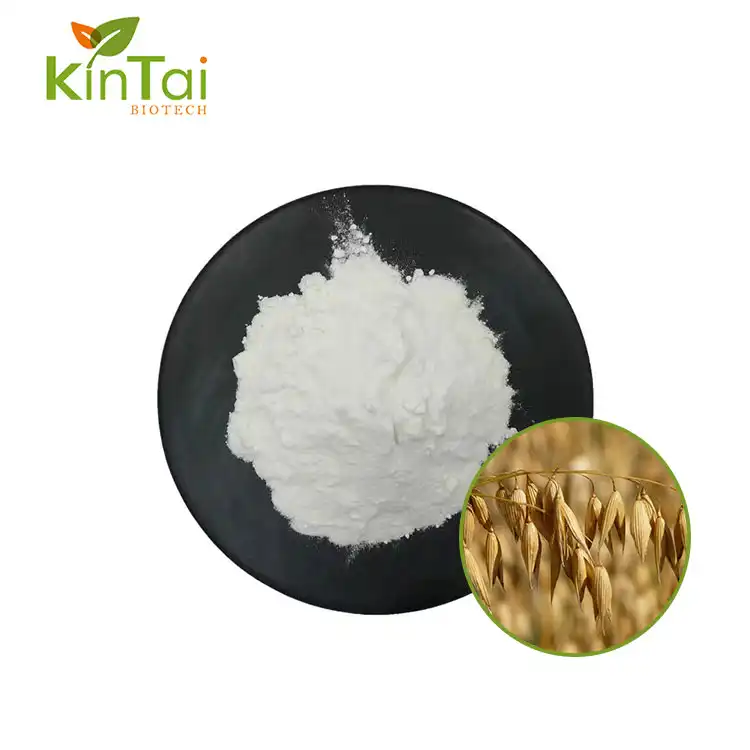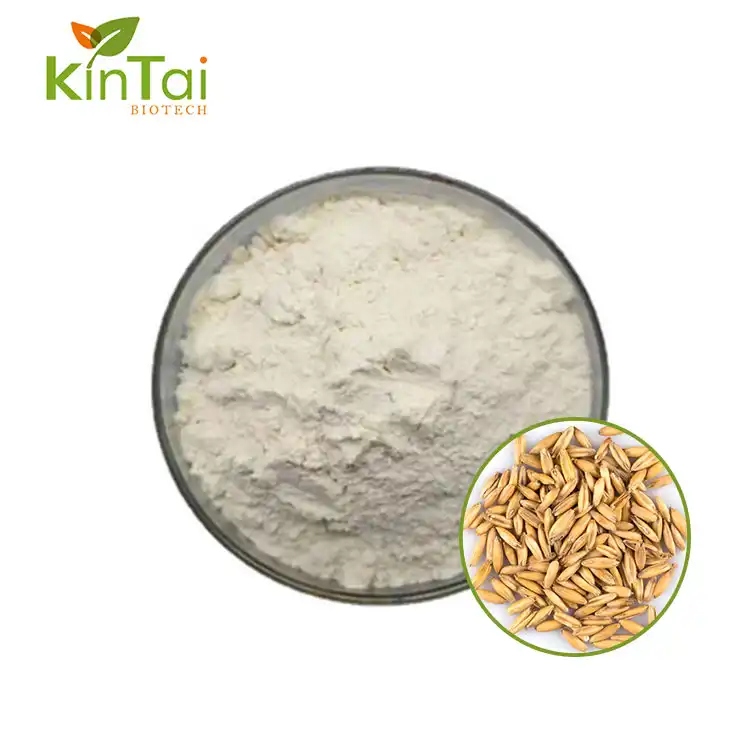Salicin Powder
Specification: 15%-98% Salicin
Test Method: HPLC
Extract Source:100% Natural
Origin:China
CAS No: 138-52-3
Appearance: white powder
MOQ: 1KG
Production Capacity: 1000KG/month
Functionality: Antibacterial, anti-inflammatory, anti-aging
Sample: Free sample available
Storage: Store in a well-closed container away from moisture and direct sunlight.Keep in cool dry place
Certs: GMP, ISO9001:2015, ISO22000:2018, HACCP, KOSHER, HALAL
Payment:Multiple terms acceptable like T/T, LC, DA.
Company Advantage: Kintai mainly focuses on the production of high content plant extracts and pharmaceutical intermediates all the year round
- Fast Delievery
- Quality Assurance
- 24/7 Customer Service
Product Introduction
Salicin Powder Manufacturer and Supplier
Salicin is a purely natural active substance extracted from the branches or bark of the weeping willow, which can be used to treat colds, fevers and infections, as well as anti-inflammatory and pain-relieving, and has a wide range of applications in the fields of medicine and biochemistry.

Healthkintai® is a manufacturer and supplier of salicin. We can provide you with high-quality 15%-98% salicin. We have a professional R&D team and a large production plant, and can provide you with customized services. If you need high-quality salicin powder, please feel free to contact us.
Chemical & Physical Properties
|
CAS Number |
138-52-3 |
Density |
1.4340 g/cm3 (Predicted) |
|
Molecular Formula |
C13H18O7 |
Molecular Weight |
286.28 |
|
Melting Point |
196-202 ℃ |
Boiling Point |
388.65 ℃ (rough estimate) |
|
Solubleness |
The solubility in water is 36 g/l. |
Test Method |
HPLC |
Sample available!Contact us now>>>
Salicin vs. Aspirin
- Differences from Aspirin: Although salicin is aspirin's "ancestor," its effects are milder and slower. Salicin requires bacterial metabolism in the intestines, gradually converting it to salicylic acid before it becomes effective. Therefore, its effects are not as rapid and intense as aspirin's.
- More GI-Friendly: Due to this slow conversion process, salicin does not directly irritate the gastric mucosa like aspirin, and therefore generally has fewer gastrointestinal side effects.
- No Effect on Coagulation: An important difference is that standard doses of salicin generally do not have the antiplatelet effect (thinning the blood and preventing blood clots) of aspirin. Therefore, it does not significantly increase the risk of bleeding.

|
Aspect |
Salicin |
Aspirin |
|
Source & Nature |
Natural compound, primarily derived from White Willow Bark. |
Fully synthetic pharmaceutical, synthesized from salicylic acid. |
|
Chemical Structure |
A glucoside of saligenin. |
Acetylsalicylic Acid. |
|
Mode of Action |
Prodrug: Requires metabolism by gut bacteria to be slowly converted into salicylic acid to become active. |
Directly active drug: Rapidly hydrolyzed in the body to salicylic acid. |
|
Onset of Action |
Slow (often takes hours), with mild and sustained effects. |
Rapid (within 30 minutes), with potent effects. |
|
Potency |
Weaker. Suitable for mild to moderate pain and inflammation. |
Potent. Suitable for moderate pain, fever, and significant inflammation. |
|
Antiplatelet Effect |
None or negligible. Does not affect blood clotting at standard doses. |
Potent. Low doses irreversibly inhibit platelet aggregation, used to prevent heart attacks and strokes. |
|
GI Side Effects |
Less common and milder. Converted in the lower intestine, minimizing direct stomach irritation. |
Common and potentially severe. Can directly irritate the gastric mucosa, leading to gastritis, ulcers, or bleeding. |
|
Primary Uses |
1. Relief of chronic pain (e.g., osteoarthritis, lower back pain) |
1. Analgesic, Antipyretic, Anti-inflammatory |
Salicin Benefits
1.Analgesic Effects
One of salicin's most notable benefits is its ability to relieve mild to moderate pain. It is a natural analgesic with a mechanism of action similar to aspirin, but milder. In the human intestine, salicin is metabolized into salicylic acid, which inhibits cyclooxygenase activity, reducing the synthesis and release of pain-causing prostaglandins. This effectively relieves a variety of discomforts, including headaches, toothaches, muscle aches, and joint pain.
2.Anti-inflammatory Properties
Salicin exhibits potent anti-inflammatory effects in conditions caused by inflammation, such as osteoarthritis, rheumatoid arthritis, and tendonitis. It inhibits prostaglandin production at the site of inflammation through the same pathway, reducing the typical inflammatory response, including redness, swelling, heat, and pain. This property makes it a natural alternative to nonsteroidal anti-inflammatory drugs (NSAIDs), particularly for chronic inflammatory conditions requiring long-term management.

3.Antipyretic Effects
Salicin has mild fever-reducing properties. Its metabolite, salicylic acid, acts on the hypothalamic thermoregulatory center in the brain. By regulating central function, it promotes peripheral vasodilation and sweating, thereby increasing heat dissipation and helping to reduce abnormally elevated body temperature caused by infection or other causes.
4.Gastrointestinal Friendliness
Compared to aspirin, a derivative of salicylic acid, salicin is significantly less irritating to the gastrointestinal tract. Because salicin itself is inactive and requires conversion by intestinal bacteria to exert its effects, it avoids direct and intense irritation of the gastric mucosa. This feature makes it an attractive option for those who cannot tolerate the gastrointestinal side effects of conventional nonsteroidal anti-inflammatory drugs.
5.Antioxidant Activity
In addition to its classic analgesic and anti-inflammatory properties, research has also shown that salicin powder and its metabolites possess antioxidant properties. They help scavenge free radicals in the body and mitigate oxidative stress-induced damage to cells and tissues. This antioxidant activity not only helps mitigate oxidative damage during inflammation but also potentially offers benefits such as anti-aging and cardiovascular health.
Salicin Uses
1. Pharmaceuticals and Healthcare Products
Chronic Pain and Inflammation Management: It is widely used to relieve the symptoms of chronic inflammatory diseases such as osteoarthritis, rheumatoid arthritis, and lower back pain. For patients requiring long-term treatment and sensitive to the gastrointestinal side effects of nonsteroidal anti-inflammatory drugs (NSAIDs), salicin offers a gentler alternative.
Headache and Minor Pain Relief: As a natural analgesic, it is used in herbal remedies to relieve tension headaches, toothaches, and muscle aches.
Dietary Supplements: As a source of 'natural aspirin,' it is formulated into various capsules, tablets, and tinctures to support joint health, promote circulation, and enhance overall well-being.

2. Cosmetics and Skincare
Exfoliation: Salicin slowly converts to salicylic acid on the skin's surface, providing a gentle exfoliating effect. It unclogs pores, removes oil, and improves acne and blackheads. Compared to direct salicylic acid, it is significantly less irritating, making it ideal for sensitive skin and for daily use. Anti-inflammatory and Soothing: Thanks to its anti-inflammatory properties, skincare products containing salicin can effectively soothe redness and swelling caused by acne and help reduce skin inflammation. It is commonly used in acne treatments, soothing serums, and toners.
Antioxidant and Anti-Aging: Its antioxidant capacity helps neutralize free radicals and mitigate damage to the skin caused by environmental stressors such as UV rays, thereby helping to brighten the complexion and delay skin aging.
3. Plant Defense and Agriculture
Natural Plant Disease Resistance Inducer: salicin powder is a precursor to salicylic acid, a key signaling molecule for systemic acquired resistance in plants. Exogenous application of salicin can activate the crop's immune system, enhancing its resistance to certain fungal, bacterial, and viral pathogens, thereby reducing the use of chemical pesticides.
Postharvest Preservation: Studies have shown that treatment with salicin may help delay postharvest aging of fruits and vegetables, reduce disease incidence, and extend shelf life.

4. Research Areas
As a Prodrug Model: Due to its unique 'prodrug'properties (requiring in vivo conversion to be effective), salicin is used as a model compound to study targeted drug delivery and metabolic dynamics.
Chemical Synthesis and Foundation for Drug Discovery: As the natural prototype of aspirin (acetylsalicylic acid), salicin holds a landmark position in the history of medicinal chemistry and continues to provide inspiration for new drug development.
FAQ
Q1:Is salicin good for skin?
A1:Like salicylic acid, salicin also aids in sloughing away excess dead skin cells which can lead to brighter and smoother skin.
Q2:What is the difference between salicin and salicylic acid?
A2:Salicin is the precursor of salicylic acid.
Our Certifications
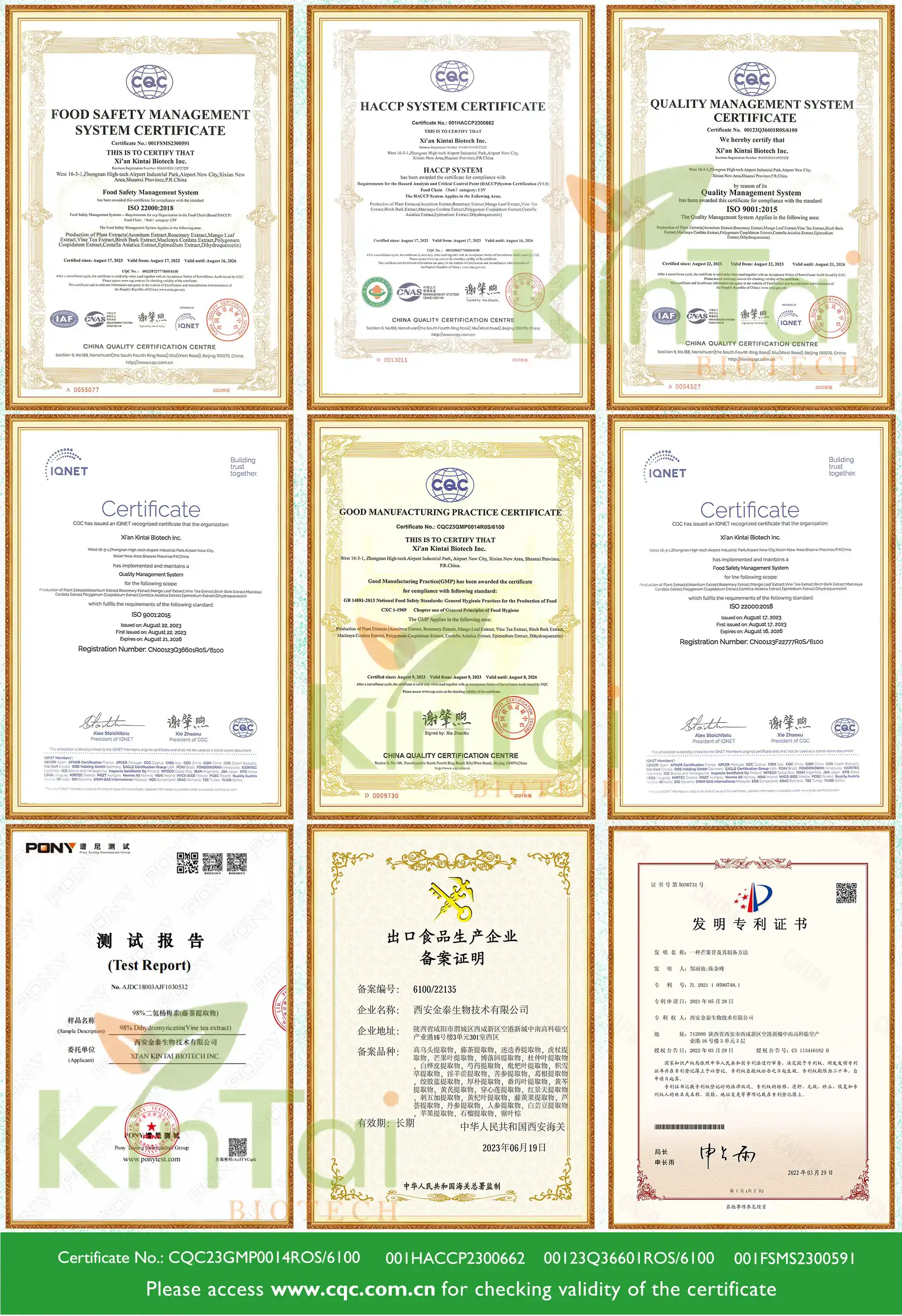
Send Inquiry

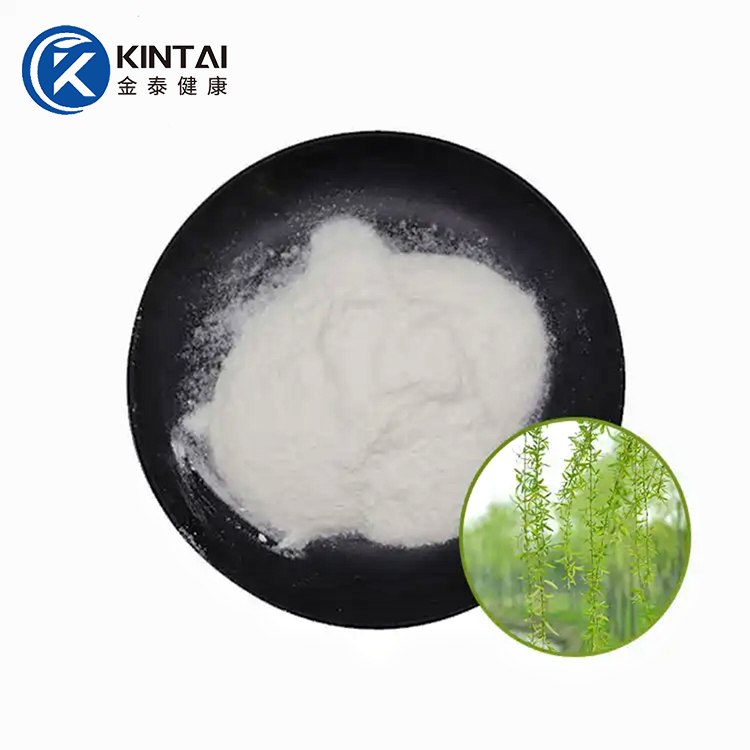
_1760325844540.jpg)
